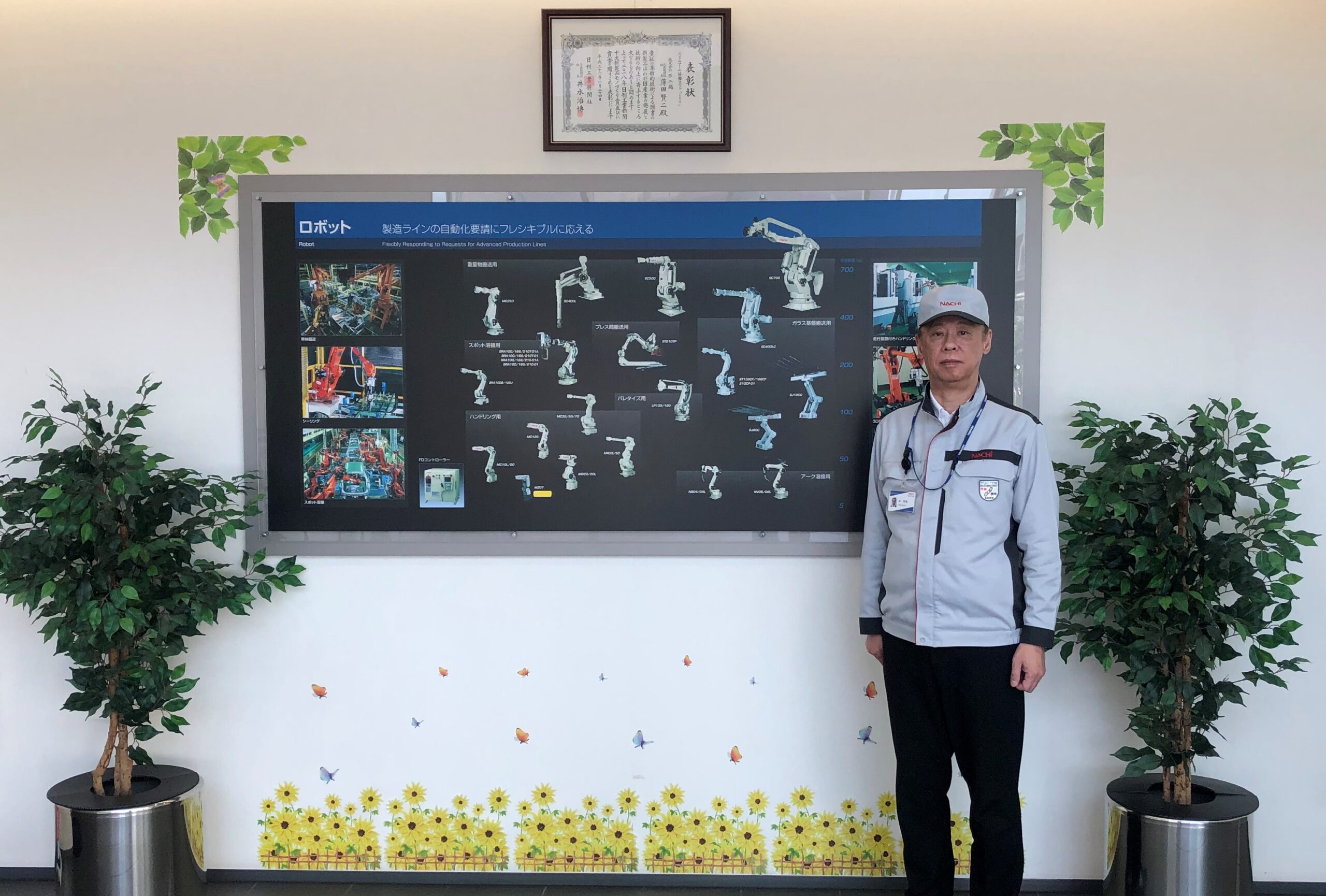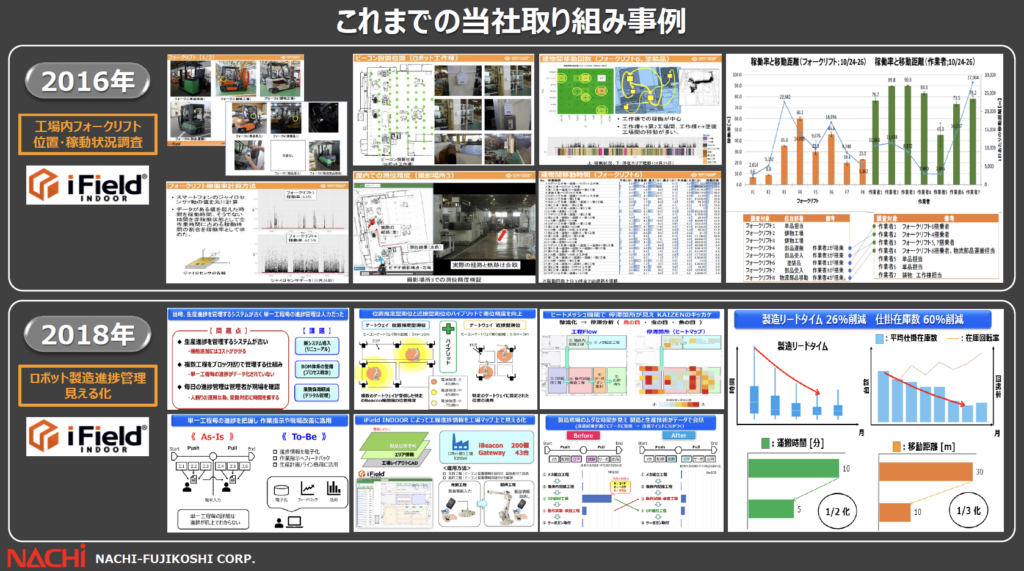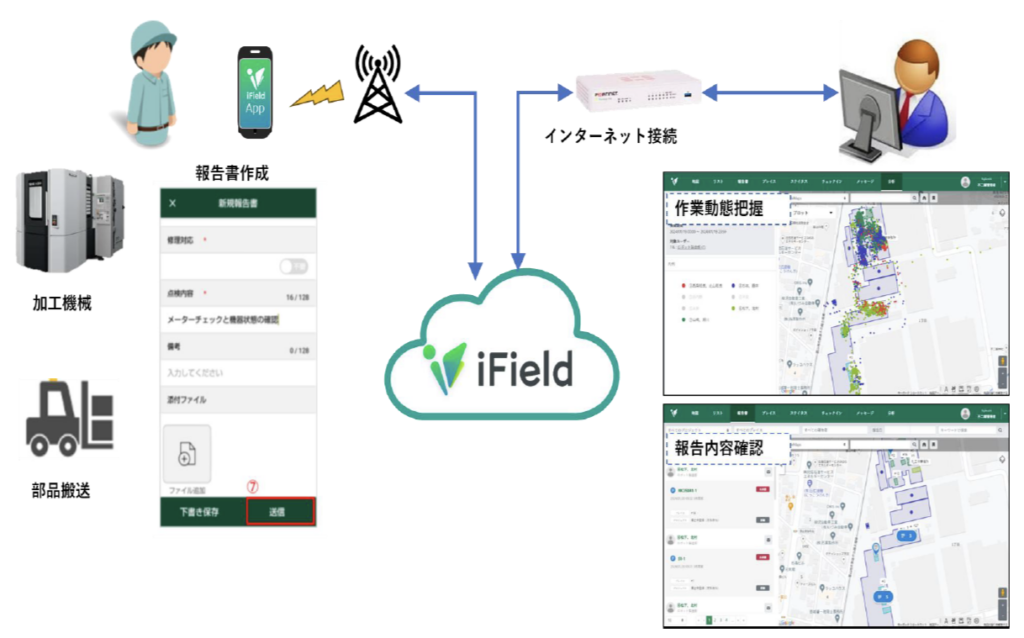Introduction:
At the robot factory of Fujikoshi, a general machinery manufacturer famous for its NACHI brand, efforts are underway to transform it into a smart factory. We asked Masaki Hayashi, who is leading the initiative in both name and reality as the robot manufacturing plant manager, to give us an overview of the initiative and ``tips for promoting DX.''
●Person who answered

Fujikoshi Co., Ltd.
Robot Division Robot Manufacturing Plant Manager
Masaki Hayashi
About the business overview of “Fujikoshi”
Secretariat:First of all, please give us an overview of Fujikoshi.
Forest:Fujikoshi is a general machinery manufacturer founded in Toyama in 1928. At that time, machine tools were dependent on imports, but the company was founded with the aim of domestically producing machine tools, believing that ``independence in the machine tool field is the foundation for the development of our country's industry.'' It began with the development of an electric saw blade called Since then, Fujikoshi's ``Hacksaw'' has been recognized as an excellent domestic product and was even seen by Emperor Showa, so we have started doing business using ``NACHI'' as our trademark and mark. The company will celebrate its 100th anniversary in about four years.
Secretariat:thank you. It is truly a company that has been able to move forward with the progress of Japanese industry. What kind of business are you currently involved in?
Forest: Our company aims to ``contribute to the manufacturing process,'' so we operate a ``materials business'' such as special steel and thermotech, a ``machinery tool business'' that includes tools and machine tools, and a ``machinery tool business'' that includes bearings, hydraulic equipment, and car hydraulics. We are engaged in the "functional parts business" and the "robot business." In the robot business, we have manufacturing bases in Toyama and overseas, and as the robot manufacturing plant manager, I am in charge of the manufacturing part.
Secretariat:thank you. What kind of robots does Fujikoshi make?
Forest:The robots produced by Fujikoshi are industrial robots, and their main type is "vertical articulated robots." The weight that a robot can lift is called "payload," and we manufacture robots with a payload of about 1 kg to 1 t. One of the reasons why the robot industry developed is that it was used in automobile manufacturing.In automobile manufacturing, robots are used for spot welding with a device called a hard gun connected to the tip, and for transportation between presses. Masu. We have also released small robots that are being introduced in the assembly industry.

Fujikoshi Robot Manufacturing’s “smart factory” efforts
Secretariat: Now, getting to the main topic, please tell us about the "smart factory" initiatives being implemented at Fujikoshi Robot Manufacturing.
Forest: First, in 2016, we wanted to "visualize the location information and operating status of forklifts in a factory," so we worked with a company called MULTISOUP, which is strong in positioning technology, using Beacons and smartphones. Subsequently, in 2018, we installed Beacon and Bluetooth gateways to "visualize the progress management of robot manufacturing," and were able to reduce manufacturing lead time by 26% and in-process inventory by 60%. At the same time, we introduced network cameras and installed Wi-Fi to ensure safety within the factory and check work progress. As a result, we have installed over 90 Wi-Fi wireless access points, less than 30 Bluetooth gateways, and 200 Beacons at the Toyama robot factory, creating a communication environment.

(Image: Initiatives in 2016 and 2018)
Secretariat:Rather than setting up a large-scale communication environment from the beginning, you were able to expand the communication environment that forms the basis of DX while creating various DX-related challenges and success stories. What kind of efforts have you been making since then?
Forest: We are conducting various initiatives using the communication environment we have established. For example, using a Wi-Fi environment, we are able to ``remotely control factory PCs from an office PC'' and ``remotely assess worker skills using smart glasses.'' In addition, we are working on ``electronizing checklists by voice using smartphones'' so that workers do not have to stop filling out checklists, and ``Using smartphones to understand worker work dynamics and create reports. ”, and we are also working on “understanding operating information of machine tools.” Although this is a PoC, we are also working on ``work behavior analysis using smart watches.''

(Image of “Using smartphones to understand worker work dynamics and create reports”)
Secretariat:I got the impression that you are carrying out quite a number of initiatives to utilize digital technology simultaneously, but what are the tips for these initiatives?
Forest:I think what I've been up to so far is ``what a DX''. If you want to solve a current problem quickly, if you make it a ``big project,'' it will generally take a long time to tackle the project because it is difficult to get a budget, requires approval from executives, etc. I think this is a common occurrence. Therefore, we first make the project a project that we can approve, and then involve companies that are good at it to solve the problem in a short period of time with a low budget. Starting in June 2023, the robot factory is implementing the project under the name "Yachchae DX Project."
Secretariat:What are the tricks to getting ``companies that are good at'' involved?
Forest: It's intuition and experience (lol). When I think, ``I want to do something like this,'' I take action first, and then I make a decision. One of them is Mr. Nasu, president of MULTI SOUP, who has been helping us in the positioning field since 2016, when we started visualizing the location information and operating status of forklifts in factories.
Secretariat:What are some tips for getting people “inside the company” involved?
Forest: First, I will create proper materials and explain the initiatives to the workers. After giving an explanation, we take a survey to measure the level of expectations for the initiative. We do things from the top down, but since I've been on-site all the time, I'm always thinking about how to make things easier on-site. I often say, ``Let's have fun and make money, so let's use IoT and IT as weapons.'' There are many employees of the younger generation at the robot factory, and I think they are able to use the robots well. We have been holding dialogue meetings with workers for a long time. Under these circumstances, we are moving forward with our efforts while having discussions about what we would like to see done.
About the future of DX
Secretariat: Please tell us about Director Hayashi's thoughts on proceeding with DX.
Forest:DX must lead to behavior change. The ``Do it! DX Project'' was started because we wanted to change the mindset of technicians and bring about a revolution in technicians. I would like to cultivate new technicians who are able to do so because they are from Generation Z, who do not know about past successes, and who use digital data to come up with optimal solutions and communicate them on their own. I think this is our DX.
Secretariat:What are the tips for DX?
Forest: We receive DX consultations from various companies, but in many cases we are not able to properly understand and analyze the current situation. If the current situation is not analyzed scientifically, the data will be ambiguous. I don't think it will lead to true improvement unless you understand the underlying data and extract problems and issues from it. I think we need to thoroughly understand the current situation.
Secretariat:I now understand that the "initiatives" you introduced earlier are "infrastructure" for understanding the current situation.
Forest: The results of bottom-up improvements made by the workers themselves appear in the data the next day. That way, everyone will have fun. We are now applying that "experience" horizontally to various processes.
Communication technology required for next-generation communication “smart factories”
Secretariat:While you are working on various initiatives, is there anything you would like to see in next-generation communications?
Forest:For example, I think there are benefits to installing local 5G in factories. In terms of future next-generation communications, I hear that the development of 6G is currently underway, but first we need to develop on the "B to C" side and then incorporate it into "B to B." I think it will become.
Secretariat: Thank you very much for your valuable talk today.


